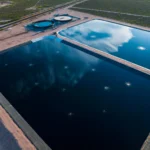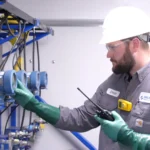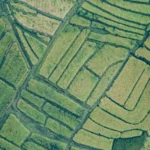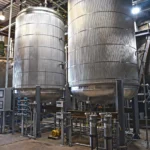Select’s capabilities touch every facet of the life cycle of water used in the drilling, completion, and production of oil and gas wells. Current market conditions have adversely affected activity levels in the drilling and completion part of our business, but the production market we serve has been less affected. The reason for this is fairly simple – oil and gas production is the primary source for our clients’ cash flow and they must keep that revenue stream flowing.
Energy producers in Oklahoma are facing a potentially game-changing situation when it comes to the disposal of produced water and flowback water. Produced water is the waste byproduct of oil and gas production, while flowback water is the water that flows back after hydraulic fracturing operations are completed. Both of these waste streams are disposed of in disposal wells. Oklahoma’s state regulatory agencies and universities have monitored seismic activity in the state for decades and have recently theorized that wastewater injection into certain geologic formations, in certain parts of the state, may contribute to seismic activity or earthquakes. They have coined the phrase “induced seismicity” to describe this phenomenon and have narrowed the focus of their attention to the Arbuckle formation, which is a formation that is widely used for wastewater injection.
Recent Oklahoma Corporation Commission (OCC) recommendations regarding injection into the Arbuckle formation have created many questions about the future handling of waste water in the affected areas of Oklahoma. Is this a crisis for the industry as the media and industry bloggers say? Or, is this an opportunity for the industry to move forward and develop a solution that is best for the Oklahoma community and the operators? It is important to look at the facts.
Background: The OCC Media Advisory
In response to increased seismic activity, the OCC’s Oil and Gas Conservation Division (OGCD) recently released two Media Advisories announcing a volume reduction plan for disposal wells that inject into the Arbuckle formation.
You can read both advisories online (February 16, 2016 & March 7, 2016). Here’s what you need to know:
- The OGCD has identified an “Area of Interest” (AOI) across central and western Oklahoma; this area was expanded in the March 7 advisory
- The AOI covers nearly 6,000 square miles and affects approximately 600 Arbuckle salt-water disposal wells (SWDs)
- The plan is to reduce 2016 injection volumes by 40% below the 2014 injection volumes (about 300,000 barrels per day)
Yes, those numbers are big. They lead to media headlines like Disaster, Crisis, Collapse, Fiasco, and other choice words. But take a closer look at those numbers. A 300,000 barrels per day (bpd), or 40%, reduction across 600 wells equates to 500 bpd per affected well. Put another way – about 4 truckloads per day for each affected well.
What does this mean for Energy Producers?
In my opinion, it is premature to label this a crisis, especially considering current market conditions. My belief is that operators could meet these reduced Arbuckle injection numbers in a variety of ways, including:
- the reduced demand for flowback water disposal as a function of reduced completion activity
- re-complete an Arbuckle well in a different zone
- drill an offset SWD and complete it in a different zone
- drive a couple of truck loads per day to a SWD outside the AOI
- install semi-permanent piping systems to divert water to a SWD outside the AOI
- shut in marginal producing wells with high water cuts to reduce total bbls injected
It is important to note that we’ve only addressed the near term aspects of this very serious situation. We will closely monitor the impact of these restrictions, on induced seismicity, in the AOI and will work with the state agencies and Oklahoma operators to be an integral part of the long term solution.
This post is part of a series discussing the SWD situation in Oklahoma. We’ll be sharing opinions and possible solutions from our team. At Select, we are solutions driven. We accept the challenges the industry and our customers hand us each day. Select is committed to working with regulators and energy producers to identify optimal solutions for operators and the Oklahoma community.









